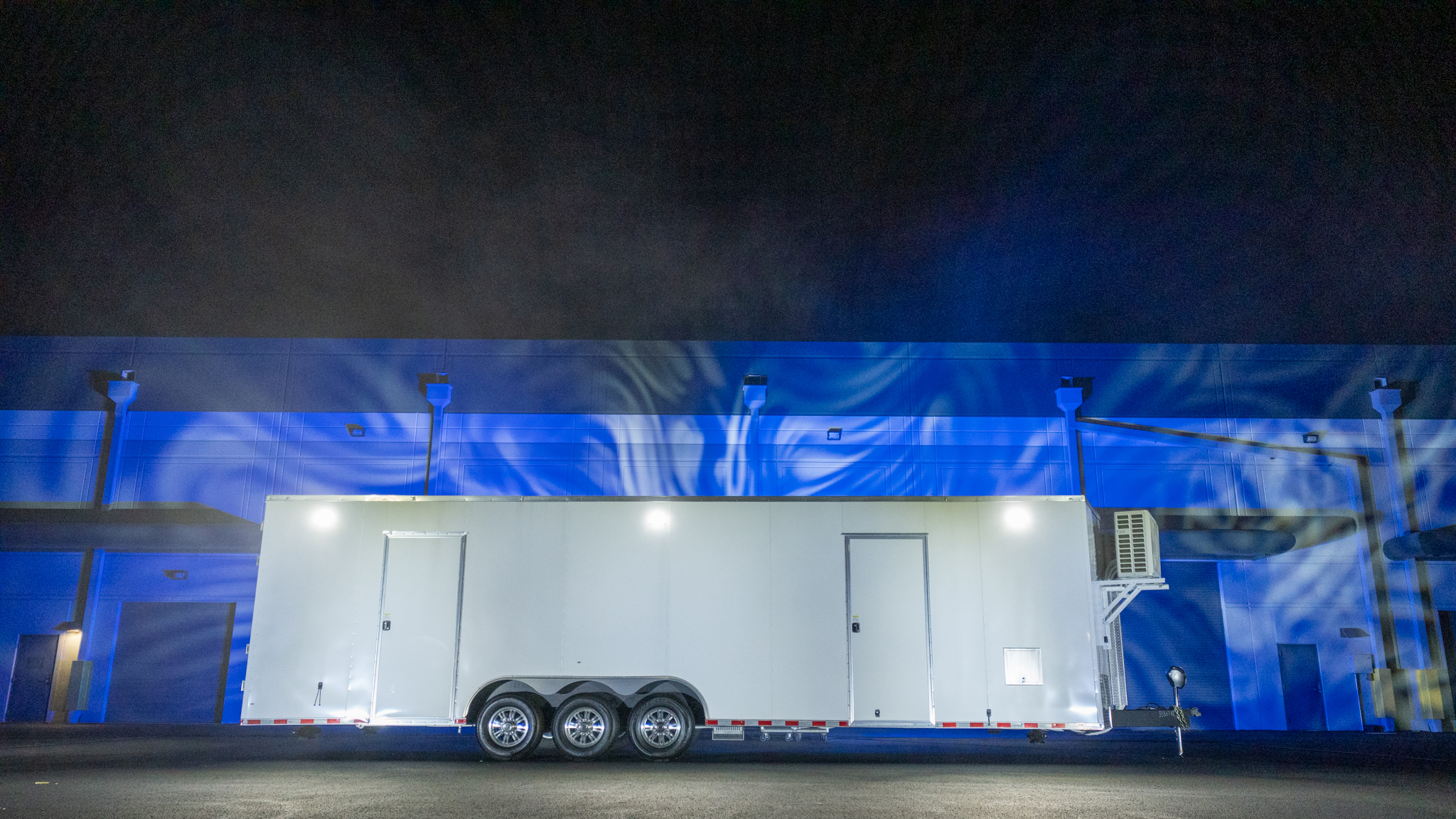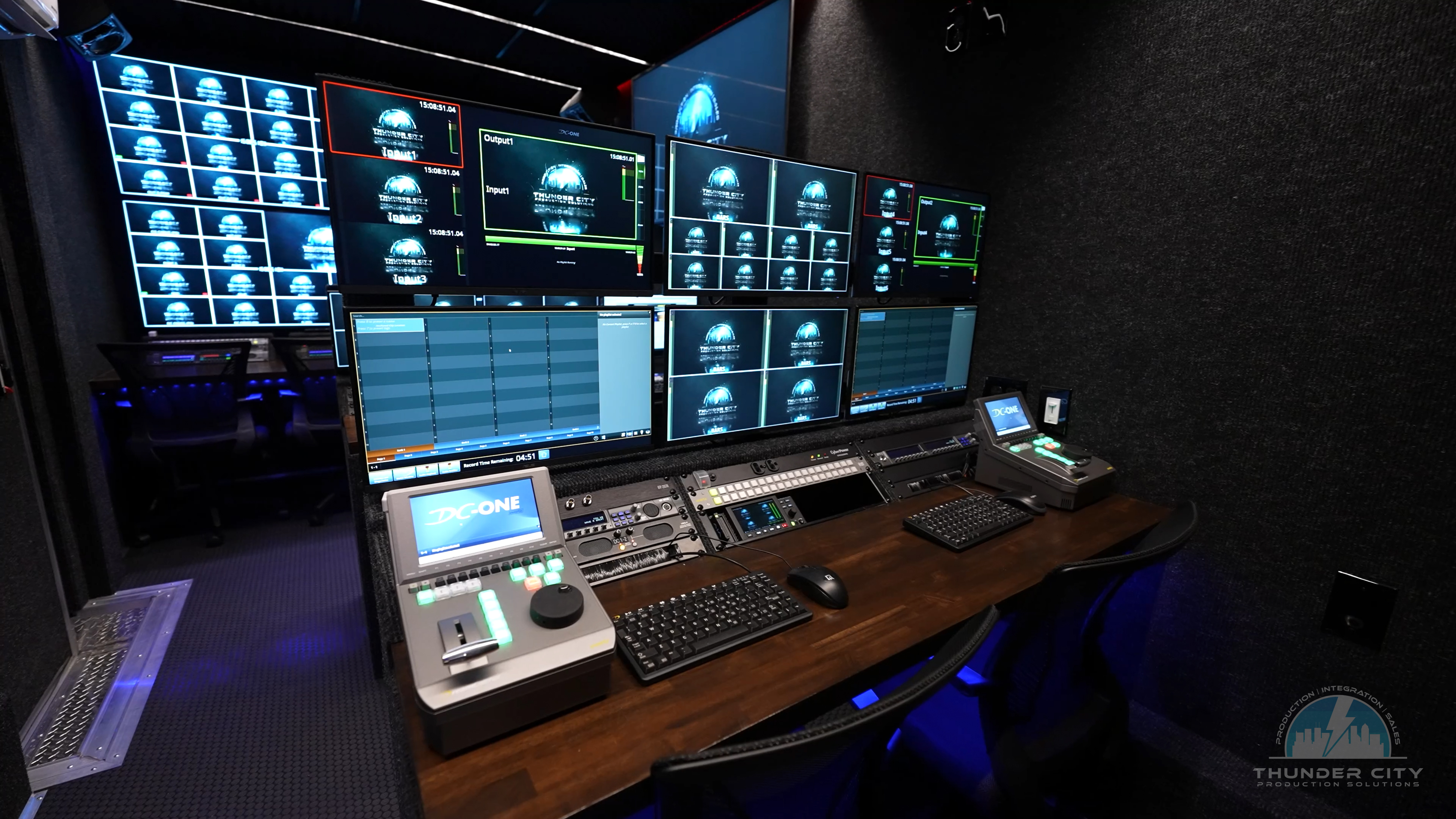FAU Goes Mobile—Go Inside the Evertz-Powered MPU
Designed and built for FAU, the unit is now capturing content for ESPN+ from student home and away games.

Florida Atlantic University is going mobile. The school has a new BOLT Series Mobile Production Unit (MPU) to create a transportable control room that is now being used to capture live content for broadcast on ESPN+. Thunder City Production Solutions chose Evertz—as well as technologies from Sony and Calrec—in FAU's new production vehicle.
Established in 2016, Thunder City Pro offers turn-key production services to both broadcast and entertainment customers who require design, procurement, and integration for various applications. In addition, Thunder City Pro also provides creative services for any of their integrations, provides crews to operate facilities, and provides ongoing service and support. The company launched its BOLT Series Mobile Production Units in 2023, making them available in 16, 24 and 32-foot models.
“BOLT came about because many of our clients were looking for smaller production vehicles that were more cost effective to build and run, and easier to transport around the country,” explained production designer and Thunder City Pro CEO Justin Stancil. “As very few companies were addressing this market, we decided to launch BOLT with a view to improving on what was already out there.”
FAU chose a 32-foot trailer and Thunder City Pro, in conjunction with its contracted production company, Digital Wave Productions, specified, ordered and installed the equipment. By having a MPU, FAU could capture student away games and generate revenue through hire. The MPU is also a teaching resource for students on FAU’s Multimedia and Production programs.

“We worked closely with FAU’s to ensure that the MPU met FAU requirements and ESPN+’s technical specifications,” Stancil said. “FAU wanted five cameras, seating and workstations for up to 10 people and high-quality, industry-standard equipment so that students could train on technology they will find in the real world. We also had to make sure that the unit was 3G 1080p, and 4K/HDR-ready for the future.”
FAU’s MPU incorporates a range of Evertz components including a DreamCatcher DC-ONE system with two DC-RCP10 controllers, a NEXX 64x64 embedding and de-embedding 12G-SDI router controlled by MAGNUM-OS and an 5700MSC-IP Grand Master clock and video synch generator.
A daily selection of features, industry news, and analysis for AV/IT professionals. Sign up below.
Evertz’ DC-ONE is an eight-channel replay system with 7.68 TB of continuous loop recording that supports 720p, 1080i, and 1080p video formats. Features include slow motion replay, live steaming between networked systems, clip creation, clip naming, metadata tagging, playlist creation and editing, audio editing, internal audio routing, content import and export, content transcoding and searching, and one touch zooming.
FAU’s MPU has Network Attached Storage on board and because this can be mounted on the DC-ONE as a drive, operators can import and export clips and graphics very quickly.
“Being able to access pre-pro elements such as clips and graphics via the NAS without having to mark in and out or clip everything saves so much time,” Stancil said. “It is a very precise, self-sustaining system, and its ability to access the NAS and all other devices that are connected to it was super important to us.”
For the MPU’s router, Evertz recommended its NEXX router, which operates with MAGNUM-OS Orchestration software. This could embed and de-embed on every input, handle MADI in and out, generate multiviewers and support processing functions such as frame synching and format conversion.
[Integrated Production Switchers: Doing More with Less]
FAU’s MPU is also equipped with an Evertz 5700MSC-IP Grand Master clock and video synch generator, which has the GPS component needed to synchronize the unit’s SMPTE ST 2110 audio console. This allows students to learn the difference between traditional baseband and ST 2110 systems.
FAU’s MPU is now in use capturing content across a range of sports including baseball, soccer and basketball.
“FAU is delighted with their new MPU, which is doing everything they wanted it to do—and more,” Stancil said. “The help and support I received from Evertz, along with the company’s exceptional technology, contributed greatly to the project’s success.”
The AVNetwork staff are storytellers focused on the professional audiovisual and technology industry. Their mission is to keep readers up-to-date on the latest AV/IT industry and product news, emerging trends, and inspiring installations.
